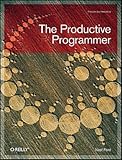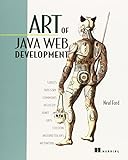Neal Ford
Director / Software Architect / Meme Wrangler
Neal is Director, Software Architect, and Meme Wrangler at ThoughtWorks, a global IT consultancy with an exclusive focus on end-to-end software development and delivery.Before joining ThoughtWorks, Neal was the Chief Technology Officer at The DSW Group, Ltd., a nationally recognized training and development firm. Neal has a degree in Computer Science from Georgia State University specializing in languages and compilers and a minor in mathematics specializing in statistical analysis.
He is also the designer and developer of applications, instructional materials, magazine articles, video presentations, and author of 6 books, including the most recent The Productive Programmer. His language proficiencies include Java, C#/.NET, Ruby, Groovy, functional languages, Scheme, Object Pascal, C++, and C. His primary consulting focus is the design and construction of large-scale enterprise applications. Neal has taught on-site classes nationally and internationally to all phases of the military and to many Fortune 500 companies. He is also an internationally acclaimed speaker, having spoken at over 100 developer conferences worldwide, delivering more than 600 talks. If you have an insatiable curiosity about Neal, visit his web site at http://www.nealford.com. He welcomes feedback and can be reached at nford@thoughtworks.com.
Presentations
Continuous Delivery Workshop
9:00 AM MDT
Getting software released to users is often a painful, risky, and time-consuming process. This workshop sets out the principles and technical practices that enable rapid, incremental delivery of high quality, valuable new functionality to users. Through automation of the build, deployment, and testing process, and improved collaboration between developers, testers and operations, delivery teams can get changes released in a matter of hours–sometimes even minutes–no matter what the size of a project or the complexity of its code base.
In this workshop we take the unique approach of moving from release back through testing to development practices, analyzing at each stage how to improve collaboration and increase feedback so as to make the delivery process as fast and efficient as possible. At the heart of the workshop is a pattern called the deployment pipeline, which involves the creation of a living system that models your organization's value stream for delivering software. We spend the first half of the workshop introducing this pattern, and discussing how to incrementally automate the build, test and deployment process, culminating in continuous deployment.
Keynote: This is Water
7:30 PM MDT
There are these two young fish swimming along and they happen to meet an older fish swimming the other way, who nods at them and says “Morning, boys. How's the water?” And the two young fish swim on for a bit, and then eventually one of them looks over at the other and goes “What the hell is water?“
David Foster Wallace, from This is Water
A fish is swimming along, having some breakfast, when suddenly he's snatched out of his world by his food, abruptly ejected into a bright world where it's hard to breathe, landing on the bottom of a boat, where strange alien creatures make strange sounds. Overhead, he sees an airplane flying at 500 mph. Suddenly, one of the creatures picks him up, removes the hook, and, just as suddenly, he's back home. Yet, when he regales his friends with this tale, no one can believe such a strange world could exist.
This keynote describes the water you swim in but cannot see anymore, like relational databases and application servers. And, it jerks you out of this water (briefly) to describe a strange, fantastical world with things like immutable database servers and phoenix machines. You may have trouble getting your friends who didn't attend to understand.
Continuous Delivery for Architects
1:30 PM MDT
This multi-disciplinary session takes a deep dive into
the confluence of topics required to fully understand the intersection
of Continuous Delivery and architecture, including evolutionary
architecture and emergent design, with an emphasis on how
architectural decisions affect the ease in changing and evolving your
code, the role of metrics to understand code, how Domain Driven
Design's Bounded Context reifies in architecture, how to reduce
intra-component/service coupling, and other techniques.
Continuous Delivery is a process for automating the production
readiness of your application every time a change occurs – to code,
infrastructure, or configuration. In the Continuous Delivery world,
rather than hone skills at predicting the future via Big Design Up
Front, Continuous Delivery emphasizes techniques for understanding
and changing code with less cost during the process. Some architectures
and engineering practices yield better designs for this
environment. This multi-disciplinary session takes a deep dive into
the confluence of topics required to fully understand the intersection
of Continuous Delivery and architecture, including evolutionary
architecture and emergent design, with an emphasis on how
architectural decisions affect the ease in changing and evolving your
code, the role of metrics to understand code, how Domain Driven
Design's Bounded Context reifies in architecture, how to reduce
intra-component/service coupling, and other techniques.
Introduction to Clojure Workshop Part 1
3:15 PM MDT
Clojure is the most interesting new language on the JVM, both from a syntactic and capabilities standpoint. This workshop teaches attendees Clojure syntax, Java interoperability, and how to build applications, both Swing and Web, using Clojure.
After spending time with Clojure, you gradually realize that it isn’t really a new language, but rather a vision for how to write robust applications that could only be realized via a new language — called Clojure.
Clojure is the most interesting new language on the JVM, both from a syntactic and capabilities standpoint. This workshop teaches attendees Clojure syntax, Java interoperability, and how to build applications, both Swing and Web, using Clojure.
Come see why there is so much buzz around the most innovative new language in a decade.
Introduction to Clojure Workshop Part 2
5:00 PM MDT
Clojure is the most interesting new language on the JVM, both from a syntactic and capabilities standpoint. This workshop teaches attendees Clojure syntax, Java interoperability, and how to build applications, both Swing and Web, using Clojure.
Continues the topics introduced in Part 1 of the workshop
Come see why there is so much buzz around the most innovative new language in a decade.
Build Your Own Technology Radar Workshop for Architects
8:30 PM MDT
A Technology Radar is a tool that forces you to organize and think about near term future technology decisions, both for you and your company. This talk discusses using the radar for personal breadth development, architectural guidance, and governance.
ThoughtWorks Technical Advisory Board creates a “technology radar” twice a year, a working document that helps the company make decisions about interesting technologies and where we spend our time. ThoughtWorks then started conducting radar-building exercises for our clients, which provides a great medium for technologists company-wide to express their opinions about the technologies they use every day. For companies, creating a radar helps you document your technology decisions in a standard format, evaluate technology decisions in an actionable way, and create cross-silo discussions about suitable technology choices. This session describes the radar visualization and how to conduct a radar building session for yourself. After a brief introduction, the bulk of the workshop consists of attendees building a radar for the group, following the same procedure you'll use when you do this exercise at your company. At the end, we'll have created a unique Radar for this event and practiced doing it for yourself.
Books
The Productive Programmer (Theory in Practice (O'Reilly))
by Neal Ford
Anyone who develops software for a living needs a proven way to produce it better, faster, and cheaper. The Productive Programmer offers critical timesaving and productivity tools that you can adopt right away, no matter what platform you use. Master developer Neal Ford not only offers advice on the mechanics of productivity--how to work smarter, spurn interruptions, get the most out your computer, and avoid repetition--he also details valuable practices that will help you elude common traps, improve your code, and become more valuable to your team. You'll learn to:- Write the test before you write the code
- Manage the lifecycle of your objects fastidiously
- Build only what you need now, not what you might need later
- Apply ancient philosophies to software development
- Question authority, rather than blindly adhere to standards
- Make hard things easier and impossible things possible through meta-programming
- Be sure all code within a method is at the same level of abstraction
- Pick the right editor and assemble the best tools for the job
This isn't theory, but the fruits of Ford's real-world experience as an Application Architect at the global IT consultancy ThoughtWorks. Whether you're a beginner or a pro with years of experience, you'll improve your work and your career with the simple and straightforward principles in The Productive Programmer.
The ThoughtWorks Anthology: Essays on Software Technology and Innovation (Pragmatic Programmers)
by ThoughtWorks Inc.
ThoughtWorks is a well-known global consulting firm; ThoughtWorkers are leaders in areas of design, architecture, SOA, testing, and agile methodologies. This collection of essays brings together contributions from well-known ThoughtWorkers such as Martin Fowler, along with other authors you may not know yet. While ThoughtWorks is perhaps best known for their work in the Agile community, this anthology confronts issues throughout the software development life cycle. From technology issues that transcend methodology, to issues of realizing business value from applications, you'll find it here.
No Fluff, Just Stuff Anthology: The 2006 Edition (Pragmatic Programmers)
by
Twenty-seven weekends a year, the No Fluff, Just Stuff conference rolls into another town, featuring the world's best technical speakers and writers. Up until now, you had to go to one of the shows to soak up their collective wisdom. Now, you can hold it in the palm of your hand. The No Fluff, Just Stuff Anthology represents topics presented on the tour, written by the speakers who created it. This book allows the authors the chance to go more in depth on the subjects for which they are passionate. It is guaranteed to surprise, enlighten, and broaden your understanding of the technical world in which you live.
The No Fluff, Just Stuff Symposium Series is a traveling conference series for software developers visiting 27 cities a year. No Fluff has put on over 75 symposia throughout the U.S. and Canada, with more than 12,000 attendees so far. Its success has been a result of focusing on high quality technical presentations, great speakers, and no marketing hype. Now this world-class material is available to you in print for the first time.




